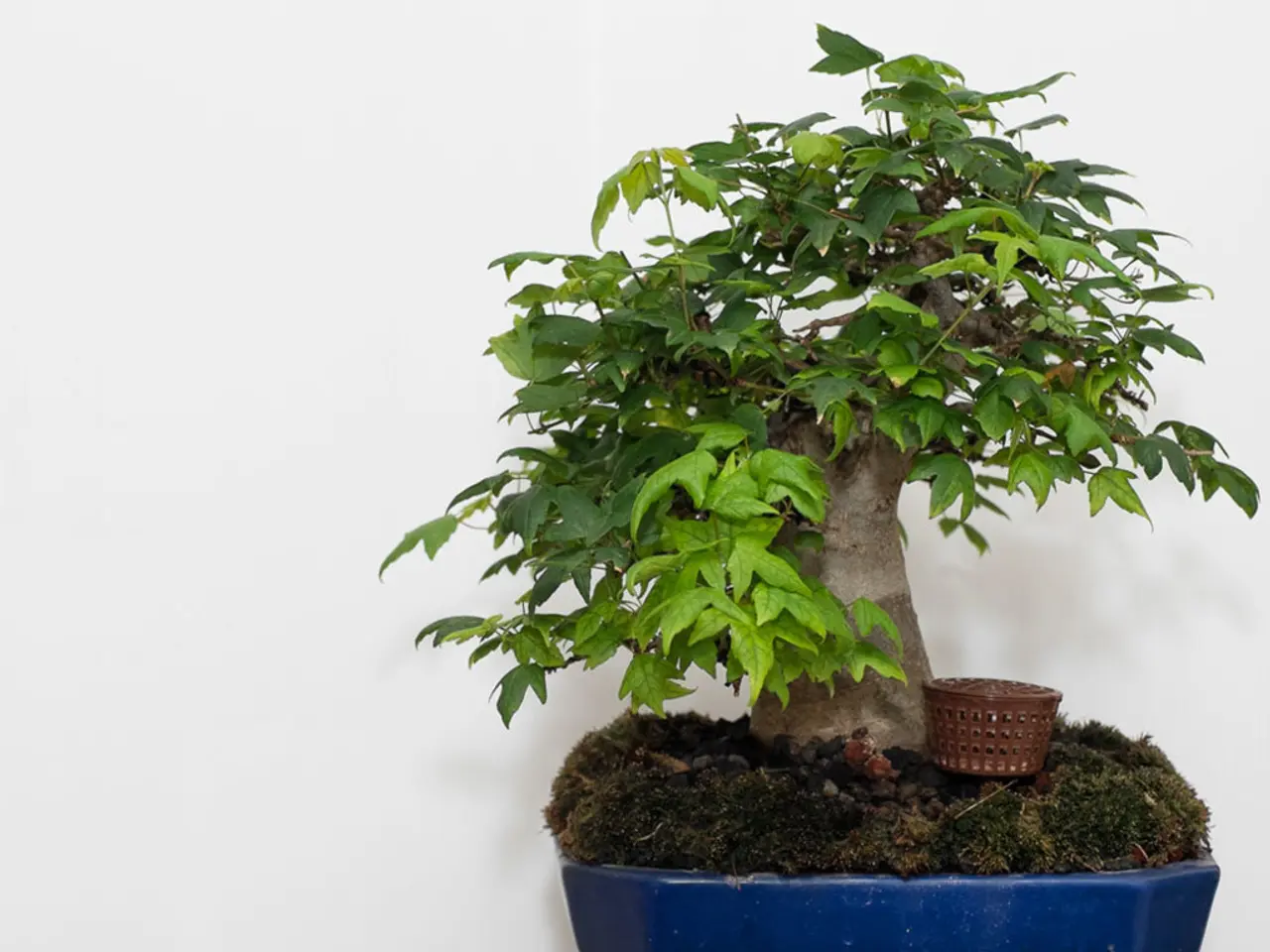Comprehensive Handbook on Crafting Miniature Boxwood Trees as Bonsai
Boxwood bonsai, with their gnarled branches and evergreen foliage, make for unique and striking specimens. Whether you've chosen the European common boxwood or the Chinese variety, here's a comprehensive guide to help you care for your new bonsai.
Firstly, it's essential to understand the differences between these two popular species. The European common boxwood prefers to grow outdoors and is frost-tolerant, while the Chinese boxwood does well in indoor conditions but requires a cool room for overwintering. The Chinese boxwood, interestingly, does not go fully dormant in the winter months, unlike its European counterpart, and requires monthly fertilization.
When it comes to watering, the 'Goldilocks' effect is key. Aim for medium daily watering, checking the soil moisture daily and watering as needed to keep the soil evenly moist but not waterlogged. Water slowly and allow absorption, with some recommendations suggesting watering every four days or even daily, depending on conditions.
Defoliation, the removal of some or all of the leaves after they've sprouted for the growing season, is best done in early June so the tree can fully recover before winter. New, smaller leaves will grow to replace them. However, it's important to note that defoliation should be done carefully, as completely defoliating a boxwood bonsai may result in the tree never regaining its leaves.
When it comes to repotting, standard bonsai care practices recommend doing so every 2 to 3 years to refresh the soil and trim the roots. Repotting is typically done in early spring before the growing season starts.
Boxwood bonsai are hardy and mistake-resistant, making them suitable for beginners. They tolerate varying levels of light, but prefer a fair amount of sunlight during the growing season. The evergreen boxwood is a popular shrub used for bonsai.
Lastly, it's worth noting that boxwood bonsai are poisonous to pets. If ingested, the effects can range from stomachache to fatality. It is recommended for pet owners to completely separate bonsai and pets, or to grow exclusively outdoors if they have an indoor pet.
With little effort, a boxwood bonsai can be transformed into a unique and stunning specimen. So, whether you're a seasoned gardener or a beginner, consider adding a boxwood bonsai to your collection and enjoy the beauty it brings to your home or garden.
styling techniques for your indoor bonsai can be applied by pruning its gnarled branches to desired shapes and sizes, creating a miniature landscape; understanding the lifestyle preferences of the Chinese boxwood, such as summer placement in direct sunlight and cold room overwintering, contributes to its overall health and longevity. home-and-garden enthusiasts may appreciate the addition of a bonsai bonsai, with their evergreen foliage and unique appearance, not only enrich their indoor decor but also promote a calming lifestyle.




